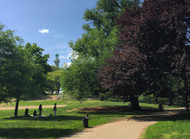Feb 28th 2022
Olmsted Spotlight: Fort Greene Park - “A Park for the Community”
In honor of the 200th anniversary of the birth of Frederick Law Olmsted, the founder of American landscape architecture, we welcome you to our series of interviews featuring Olmsted parks across the nation.
Fort Greene Park was designated a park in 1847 by the City of Brooklyn, New York. The 30-acre property was designed by Frederick Law Olmsted and Calvert Vaux, strategically honoring its history that dates back to the Revolutionary War. Today, Fort Greene Park thrives as a community gathering place with spectacular views of the city, inviting open spaces, and rolling hills.
We invite you to learn more in our Q & A with Rosamond Fletcher, Executive Director of Fort Greene Park Conservancy.
What was Olmsted and Vaux's original vision for the park?
The park has a significant history, so the design preserved the hill which was historically used for forts during the Revolutions War and War of 1812. The idea was a continuation of the vision of Walt Whitman, who helped make the case for the park’s designation in 1847. Walt Whitman was living in Brooklyn in the mid-1800’s and he really imagined it to be a retreat for city dwellers.
Whitman described the park as “a place of recreation . . . where, on hot summer evenings, and Sundays, [urban dwellers] can spend a few grateful hours in the enjoyment of wholesome rest and fresh air.”
Olmsted and Vaux built upon Whitman’s vision and wanted to make the park a place of relaxation and rejuvenation within the growing city. They took advantage of the topography of the hill to create paths for strolling where visitors would encounter beautiful views along the way.
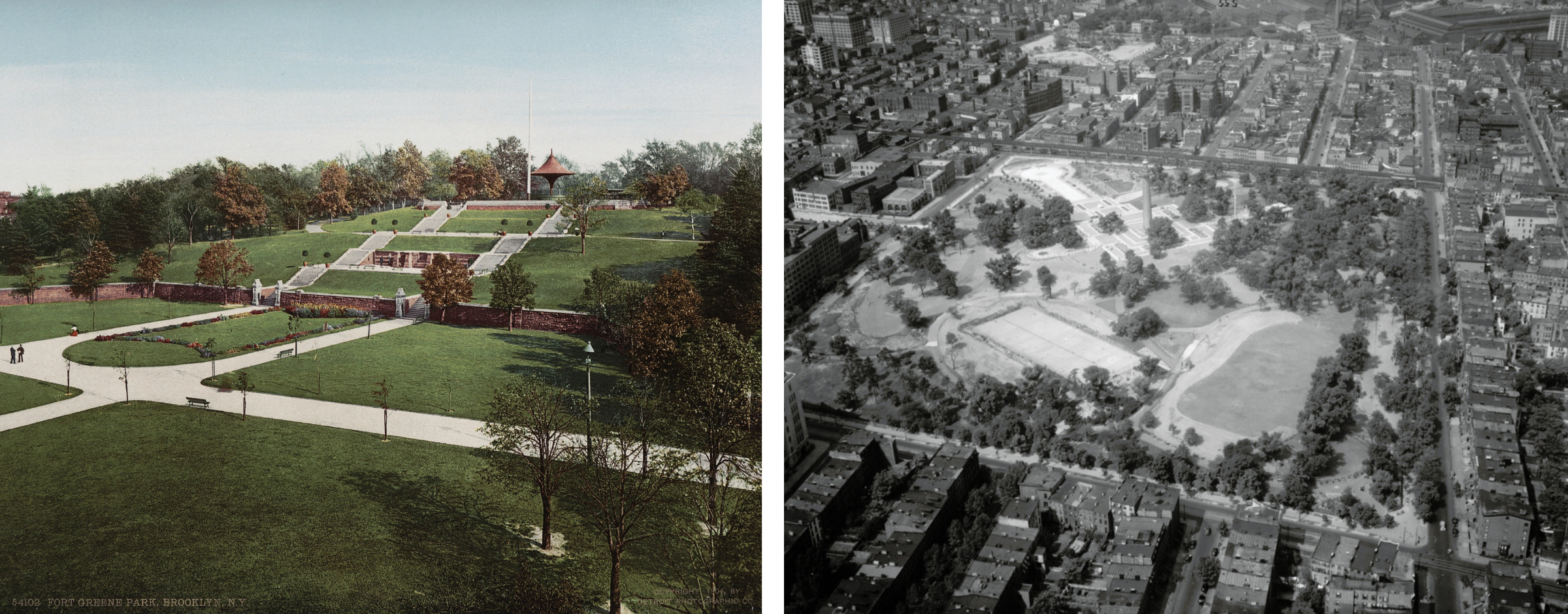
Left: Fort Greene Park circa 1904. Right: Aerial photo of the park, taken on September 8, 1937. Courtesy of the New York City Parks Photo Archive.
What are the unique features of the park?
The Prison Ship Martyrs Monument, designed by the architect Stanford White, is located at the heart of the park, honoring the patriots who died during the Revolutionary War on prison ships. Not many people know that the park is a burial ground to more than 11,500 men and women who were prison ship martyrs. Their remains are buried in a crypt in the park, marked by the nearly 150-foot Doric column and crowned with a 20-foot bronze urn.
“Both the landscape we see today and a crypt built into the ancient hillside were included in the plan designed to highlight the site's natural topography and vistas.” - Fort Greene Park Conservancy

Left: The Prison Ship Martyrs Monument in 1941, on the eve of World War II. Right: The monument in present day. Photos courtesy of @fortgreenepark.
How many different styles of benches can be found in the park?
We have five different bench styles, including two variations of the concrete benches along with the Central Park Settee and the 1939 World’s Fair Bench, both in painted and unpainted form. The seating is arranged in a number of places, along the meandering paths, along the lawn, and around the monument. Pairing the natural wood benches around the stone monument adds a natural element to the landscape, whereas the classic green benches can be found along the paths and surrounding the lawns to blend in with the greenery.
The Conservancy has taken a role to expand the number of benches in different areas of the park since the park is busy year round. One of the areas of the park that is getting new seating is the northwest corner, where capital improvements by NYC Parks will add a number of benches. There is also a high demand for the Dedicate A Bench program, so we are looking to add more benches for that reason as well.
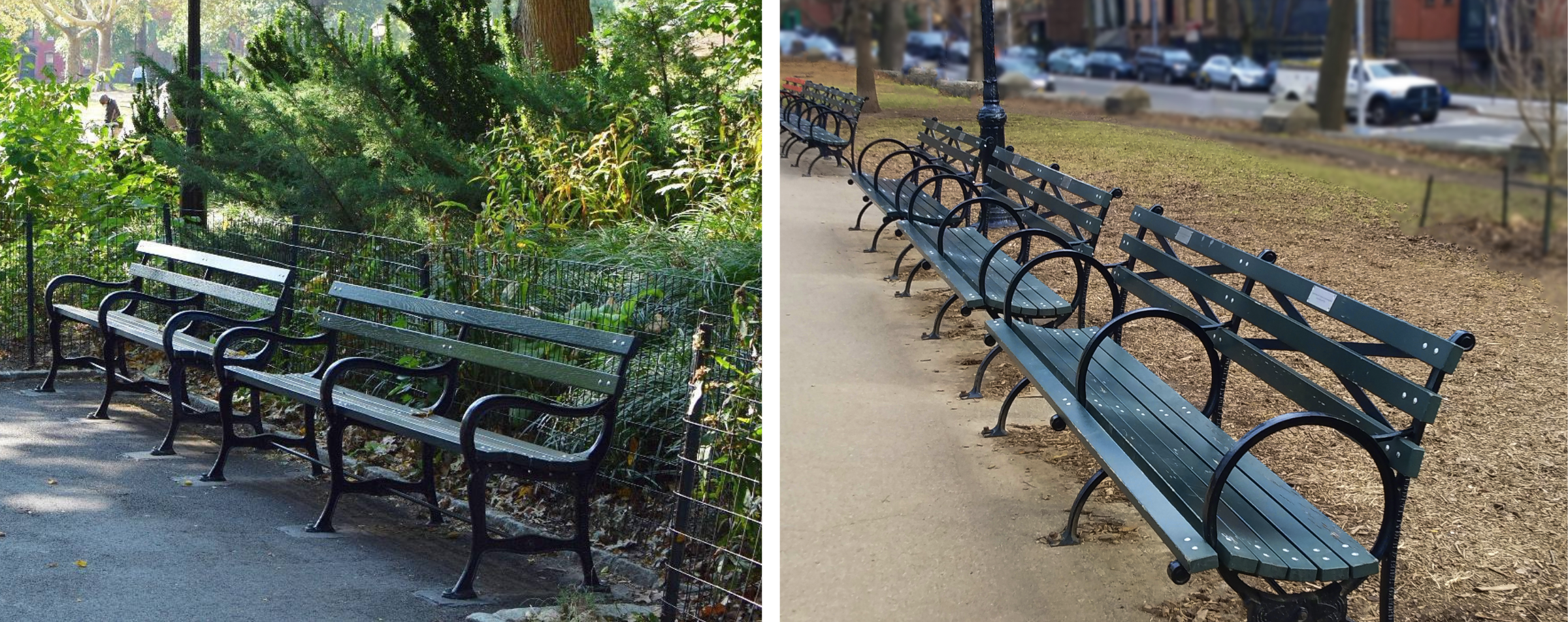
Left: The iconic Central Park Settee with Armrests. Right: The classic 1939 World's Fair Bench at Fort Greene Park. Photos courtesy of @fortgreenepark.
What are the continuous preservation efforts of the Fort Greene Park Conservancy?
Currently we are focusing on the rehabilitation of the lawns. The park gets a lot of use and it’s important to keep up the condition of the lawns. We have a number of volunteer programs that are a great help with gardening and keeping the park clean.
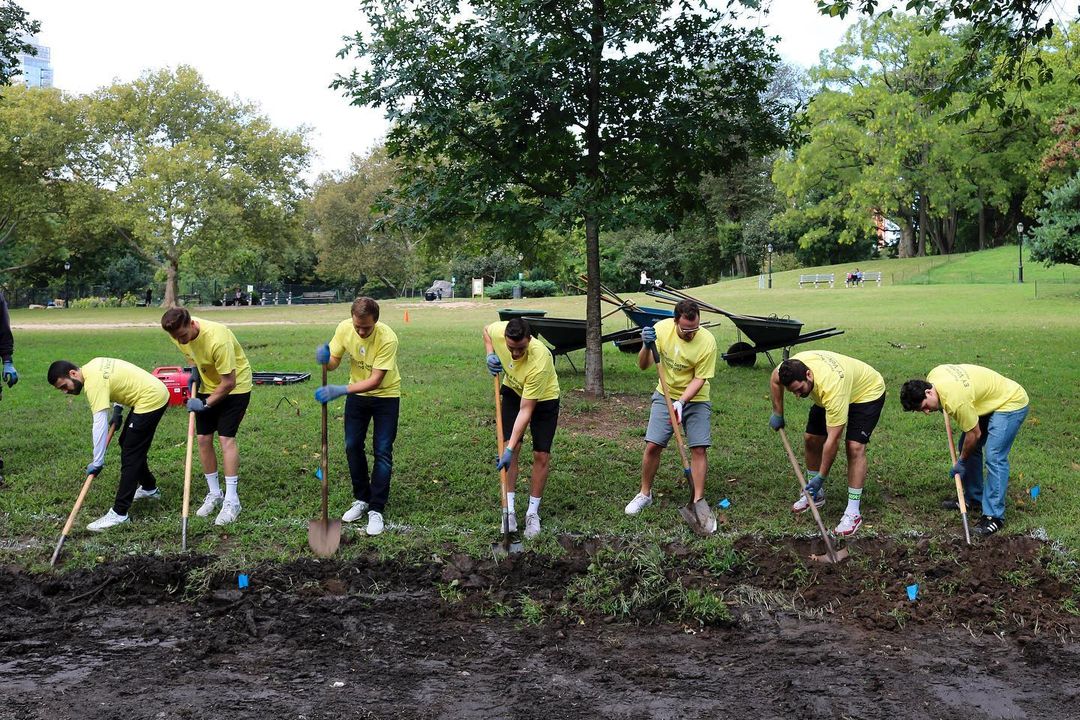
A group of volunteers at Fort Greene Park in the summer time. Photo courtesy of @fortgreenepark.
What is your favorite part of the park?
My favorite part is the plaza surrounding the monument because it lends itself to the best people watching. There’s always so much activity, from people working out, to live music and major events. We even have the “Great PUPkin” Dog Costume Contest, organized by our partner PUPS every Halloween, which brings thousands of community members to the park.
And we have also had many demonstrations and protests at Fort Greene Park, which continues to uphold the spirit of the park given its history and part in the Revolutionary War. I love seeing civic activism in the park, especially at the monument. It’s definitely a park for the community.
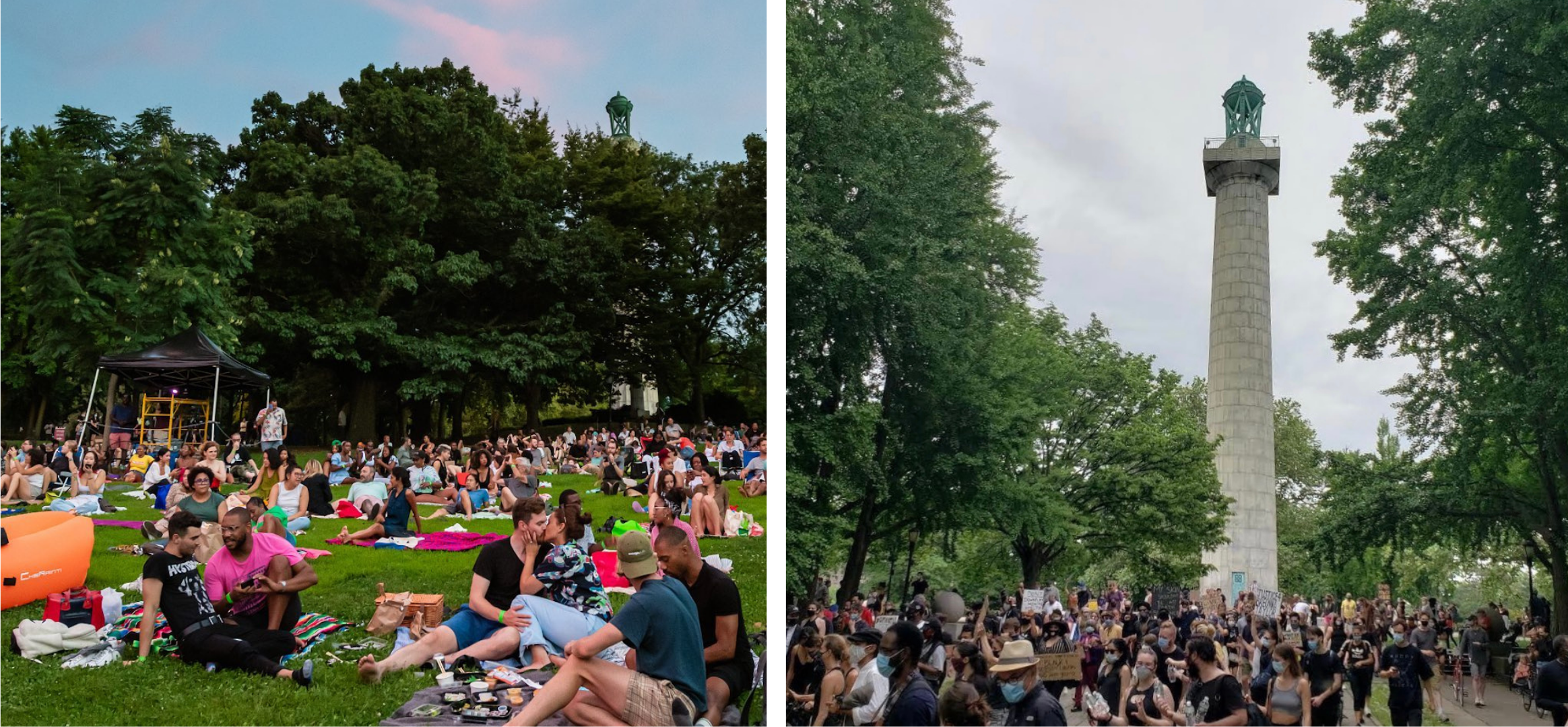
Left: Summer movie night at the park. Right: Activists gather in front of The Prison Ship Martyrs Monument in June of 2020. Photos courtesy of @fortgreenepark.
Learn more
Thank you to Rosamond Fletcher, Executive Director of Fort Greene Park Conservancy, for your insight and expertise. The role of the Fort Greene Park Conservancy is to provide programming, maintenance, and advocacy to preserve and nourish Fort Greene Park as a community resource and public space for all New Yorkers for generations to come.
Learn more and visit Fort Greene Park: fortgreenepark.org.
